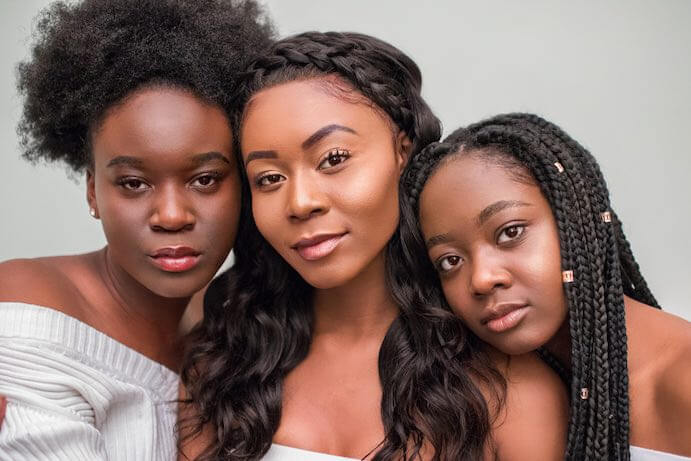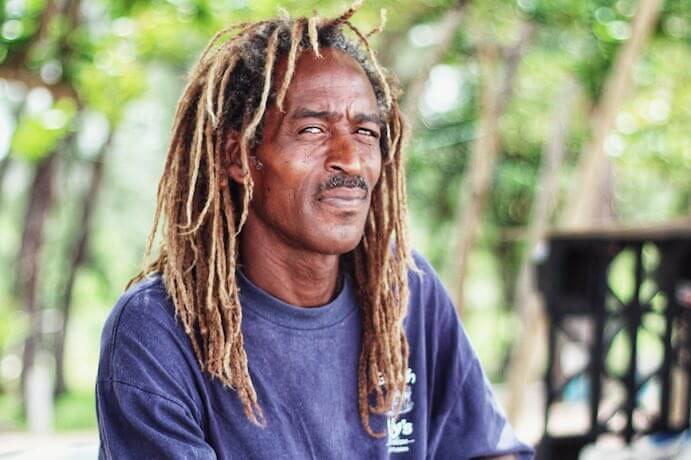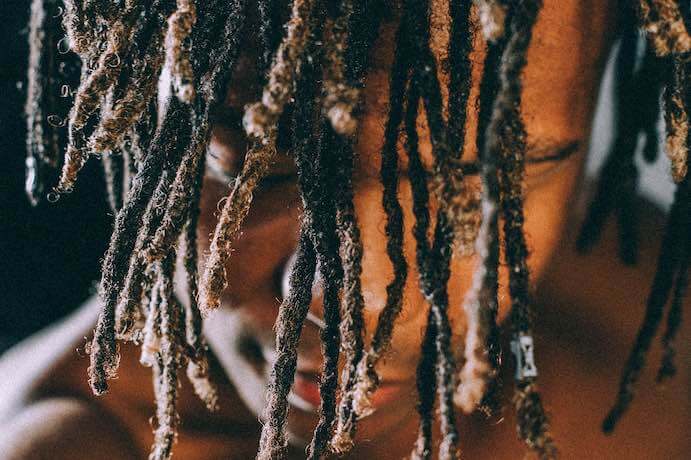“Out of Context” is a 10-part series that addresses the topic of cultural appropriation as it intersects with both Western European-based classical music and the broader social landscape. Commissioned by American Composers Forum and I CARE IF YOU LISTEN, the goal of the series is to offer information and diverse perspectives to those seeking to acknowledge historical context, honor cultural traditions that are not their own, and expand their sphere of knowledge with awareness and respect. A culminating collection of these articles and other resources will be shared for continued learning and dialogue.
In September of 2019, I decided to grow dreadlocks, taking the natural fro I’d worn since I was a teenager and twisting the hair into intricate coils that, in due time, will drape over my shoulders like furry tendrils. As a Black man in America, my people have a history of slavery, pain, oppression, and overcoming that only dreadlocks could outwardly express, in my mind. I felt reborn, but to my non-black friends, I just looked like a Soundcloud rapper. To them, it was a bold fashion choice—to me, it was my personal liberation. Throughout history, Black people have been criticized for our curly, unruly, difficult hair and coaxed into straightening it to appear more assimilated and uniform. My claim on dreadlocks was inspired by the freethinking, outcast attitude of the Rastafarians and the modern movement to refute the American view of natural Black hair as difficult and unmanageable rather than innately beautiful.
Dreadlocks were always in the background of my life. My Jamaican-born father dreaded his hair and cut it before I was born, and I had multiple siblings and friends with the style throughout different stages of my youth. My mother never liked my hair long, but it had been long since I’d moved out of her house. I’d always been known as the “fro guy,” so it was time for a change, but not just a cosmetic change like blonde highlights or a fade. It was time for a shift in the way I would appear to myself personally for the foreseeable future. I booked an appointment with a loctician in Houston, did the deed, and have been maintaining my own hair as it sprouts directly out of my head into a pitch-black mane. After leaving her shop, I felt like I’d finally found a piece of my personality that had been hidden in plain sight.
While I’m much better off in my journey eight months after my twisting, I was initially overwhelmed with a wide range of advice on dreadlocks that was divided purely by race politics. The r/Dreadlocks Reddit is browsed by people of all races donning the rebellious do, and as a result, the advice for posters can either be incredibly helpful or ignorantly harmful for their locking process. Whether Reddit—which bans posts discussing who can wear dreadlocks or cultural appropriation—wants to acknowledge it or not, hair texture is the difference between two different maintenance routines for locks to healthily grow. The twist and rip method, where hair is sectioned off before forcing it into knots by twisting sections and then ripping the hair in the opposite direction, may work just fine for someone with straight, oily hair to produce quick and easy locks, but simply twisting the hair and washing it periodically will work just as well for someone with drier, kinkier follicles. So after watching YouTube dreadlock gurus like Gunther the Great and reading posts from Black woman beauty bloggers, I found the routine with the least amount of product that works for my hair.

Photo by Eloise Ambursley on Unsplash
Until I did the proper research, I assumed that the Black way of doing dreadlocks was the “right” way. I felt like this new routine was the purest, most natural way to have dreadlocks, thinking of my Rastafarian ancestors who made locks their symbol of rebellion and acceptance of dread as a state of mind: an intentional statement of living outside of society voluntarily, choosing to wear their hair like those cast out by neglect or force. I felt like non-Black dreadlocks were from pretenders looking to flaunt the style as a mere fashion statement, the same way style is regularly appropriated from my culture and others, including everything from music trends to clothing.
The truth is that my way of taking care of my locks, as valid as it is to me, is not the only way to have locks. In fact, the Rastafarians were not even the first to have dreadlocks. Dreadlocks have been under the ownership of many cultures, with images of locks in Hindu Vedic scriptures preceding their contemporary radical symbolism, and Indian holy men wearing locks long before the time of Rastafarian messiah King Hailie Selassie in the 1930s. Vikings, Aztecs, and Germanic tribes were also known to wear dreadlocks. It was empowering and validating for me to claim and own my dreadlocks, but it was also selfish of me to insist that only people with my skin tone and hair pattern could choose to respect the dreadlock journey.
While the recent American context has made the style more open, it has also become a political minefield as the context of the style for Black Americans has shifted from the symbol of a gangster to a reclamation of natural hair pride. In his book Twisted, author and dreadlock professor Bert Ashe describes media discrimination against men with dreadlocks. Ashe points directly to a 60 Minutes segment from 1979 that focused on Jamaican street gangs while highlighting their affinity for dreadlocks. The segment bled into entertainment with villains, drug dealers and seedy criminals in media, coincidentally also having an affinity for both long locks and crime. As a result, dreadlocks are a loaded topic for many Black men who grew up in the 1980s, many of whom opted to shave theirs off to avoid judgement.

Photo by David Cain on Unsplash
With Black hair, attitudes, and socioeconomic issues shamed and looked down upon, the reclamation of dreadlocks that began in the 1990s was inevitable. In her 2008 instructional historical book on the style, Kalimah Johnson, a Detroit loctician, reminisced about her mother encouraging her to wear her natural hair, and the adjacent judgement from post-slavery American society that forced many women to straighten their hair using relaxers. This identity crisis for Black hair makes us shame ourselves by claiming “good hair” must be straight. There’s a distinct difference between how Black Americans see the history of dreadlocks and have nurtured the hairstyle back into the spotlight, and how the rest of the world views them. For example, artists like Bob Marley donned their dreadlocks with pride and understanding, while the dreadlocks of an early Boy George, wanting to stand out and look as odd as possible, seemed more taunting than prideful, like a costume to get giggles and looks of awe from White crowds.
The racial, social, and media-based discrimination rooted in the appearance of Black people is what makes dreadlocks mine in a way that cannot be seen or felt by a White person or a person of any other race. From our varying shades of brown skin to the shape our nostrils and the size of our lips, this has led me to prove that my beauty as a Black male is natural and possible with my own patience and what I was born with. When I look in the mirror, I think of the years of discrimination and current prejudice against other Black men with dreadlocks, something a White 20-something could never understand. To this day I remember a close college friend backcombing her hair in the kitchen because she was “tired of combing her hair every morning.” To her, it was a simple change of pace, just another “cool” thing, not a movement for multiple generations of disenfranchised and judged peoples.
Neither way is right or wrong, but the historical context of dreadlocks for a Black person is much more timely and relevant to current racial relations than viking dreadlocks from hundreds of years ago are to contemporary White America. Black dreadlocks have become a hybrid of political statement and fashionable hairstyle, with rappers and pro-Black activists getting dreaded, while non-Black connections to dreadlocks in 2020 are more stylistic than symbolic.

Photo by Hannah Gullixson on Unsplash
After struggling through my own dreadlock journey with book after book, product after product, and days of itchy scalps, I’m not so high and mighty about policing who does and does not don the wild hairdo. I’ve read and spoke to others with dreadlocks or past experience with locking, and I finally understand that the point of dreadlocks is inclusion into a lifestyle change, not an exclusive cult to join. The homeless men I saw in New Orleans were worthy of my respect just as much as anyone else. His journey is simply different than mine, and I know why my dreadlocks mean so much to me.
My locks make me feel like my patience and gentle care for my hair over the past year have unlocked an appreciation for myself and my kinky, coily, ever growing hair. As someone who, like many Black people, has had image issues with my skin tone and hair, dreadlocks helped me shed those insecurities almost instantly. This liberation caused by my dreadlocks is mine alone to embrace and enjoy. I do not own the concept alone, and I do not own a hairstyle, but the current political climate against non-White beauty standards causes pride for many Black Americans to swell. Dreadlocks hold a special place of pain and pride for the Black community. Our time is now, and time shall show who dreadlocks will liberate next.




















